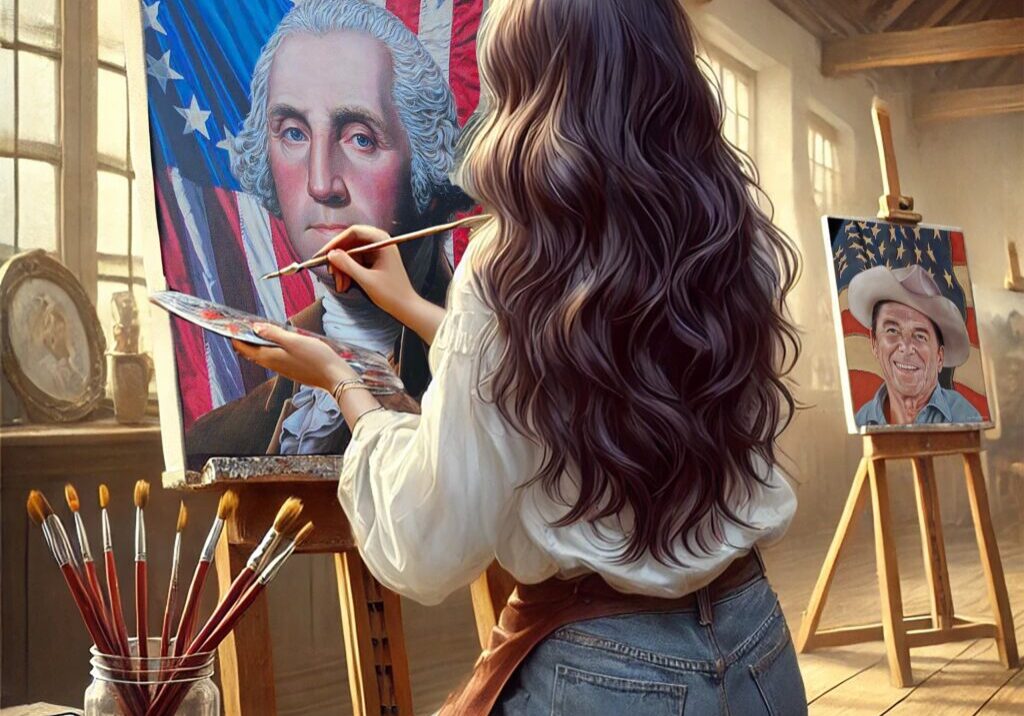
Hairlines and Honor: How Revolutionary Men Styled Their Portraits
The men of the Revolution were careful with their image. Before they were leaders on horseback or signatures on parchment, they were faces on canvas. They chose how they would be seen. Wigs were powdered. Coats were brushed. Expressions were measured. Portraiture offered them more than a mirror. It gave them control over memory. As I painted male figures in my Portraits of Influence series, I kept returning to this idea. These were not accidental appearances. These were deliberate visual decisions, crafted for posterity. Hair was one of the most symbolic choices a sitter could make. Many elite men continued to wear powdered wigs even as styles changed. A wig signaled formality, wealth, and European connection. Others chose to appear in their natural hair, tied back in a queue or loosely styled. This choice suggested a more direct, perhaps more American sensibility. In portraiture, the difference mattered. A man in a wig appeared composed and timeless. A man with uncovered hair appeared active, immediate, and engaged. One of the most telling examples is Charles Willson Peale’s portrait of George Washington at Princeton. Washington wears no wig. His graying hair is pulled back, his temples visible. The effect is personal. He is not above the viewer. He is beside them. His honor comes not from costume, but from character. The choice to show his real hair helped craft the image of the citizen-leader. It said that strength did not need disguise. Facial grooming was equally intentional. Portraits show smooth cheeks and trimmed brows. Beards were absent. The clean face became a visual standard, suggesting reason and restraint. In painting my mural figures, I followed this precedent. Jawlines are clear. Cheekbones are defined. Light falls gently across the forehead, revealing both thought and age. Lines are not erased. They are rendered with respect. These men lived under strain. Their faces show it. Clothing choices framed the head and enhanced the message. A cravat carefully tied. A collar stiffened just so. Even the angle of the shoulder could shift the energy of the portrait. I paid close attention to these details. One figure leans slightly forward, his hair drawn back, eyes narrowed in focus. Another tilts his head, jaw set, the knot of his scarf catching the light. These choices were not about fashion. They were about identity. What fascinates me is how many portraits blend modesty with grandeur. A man might wear a fine coat, but the background remains simple. The face is the anchor. The gaze is steady. This balance reflects the Revolutionary ideal. Leadership did not require excess. It required discipline. That visual economy is something I carried into the mural. I let the clothing support the expression, not overshadow it. And then there is the question of hairlines. Artists did not alter them. Receding hair, widow’s peaks, and thin crowns were painted as they appeared. These features added realism and, in many cases, gravitas. Today, we often edit such details away. The colonial portraitist embraced them. In the mural, I followed their lead. I painted age without apology. Wisdom lives in those temples. Integrity lives in the quiet crease between the eyes. Styling in portraiture is not vanity. It is communication. Revolutionary men knew that how they looked would shape how they were remembered. The brush became an extension of their public voice. As a painter, I honor that decision. I paint their hairlines and honor side by side. Because legacy is not only carried in words. Sometimes, it rests just above the brow.

